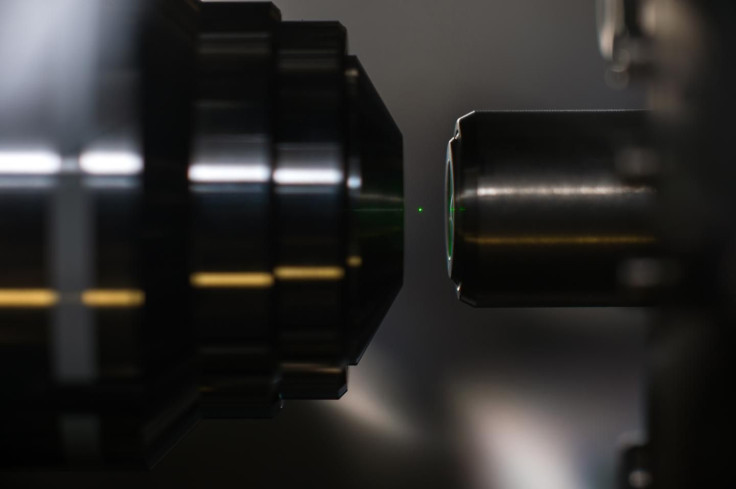Levitation Demonstrated In A Vacuum With Nanosize Particles And Lasers: Study

Researchers have proved levitation is possible with nanosize diamonds in a vacuum, according to a new study published in the journal Nature Photononics. Although nanosize particles have been trapped in a vacuum before, the nanosize diamonds can contain nitrogen-vacancy centers that emit light and have a spin quantum number of 1, according to the research team led by Nick Vamivakas at the University of Rochester.
Employing lasers, the researchers created a system to lift the particles that combined the forces of the nanodiamond's mechanical motion with the internal spin of the vacancy.
"This allows us to exert mechanical control over them," said Levi Neukirch, the lead author of the paper, according to Phys.Org. "They turn into little harmonic oscillators."
Vamivakas, an assistant professor of quantum optics and quantum physics at his university's Institute of Optics, indicated he believes the research has applications with the larger-scale quantum systems known as macroscopic Schrodinger Cat states. He told Gizmag that such Schrodinger Cat states, "are quantum states of macroscopic objects -- not microscopic things like single electrons or single photons, but large objects like cats."
"Cat or catlike states contradict our everyday experiences since we do not see common things in quantum states," Vamivakas said. "The question is: where is this boundary between microscopic and macroscopic? By generating quantum states of larger and larger objects, we can hone in on a boundary ... if there is one."
Neukirch said that levitation in the air was possible because they altered the nanodiamonds' trapping potential -- or the ability to push the particles near their quantum ground state. When an object is at its ground state, it is at a zero-point energy level.
"We can measure the position of the diamond in 3D, and we create a feedback signal based on the position and velocity of the nanodiamond," Neukirch said. "This lets us actively damp its motion."
In a previous paper published in 2013, researchers indicated nanodiamonds were levitated in air by using a trapping laser. The new paper now shows that this can be done in a vacuum, which researchers wrote is "a critical advance over previous nanodiamond optical tweezer experiments performed in liquids or at atmospheric pressure."
© Copyright IBTimes 2024. All rights reserved.





















